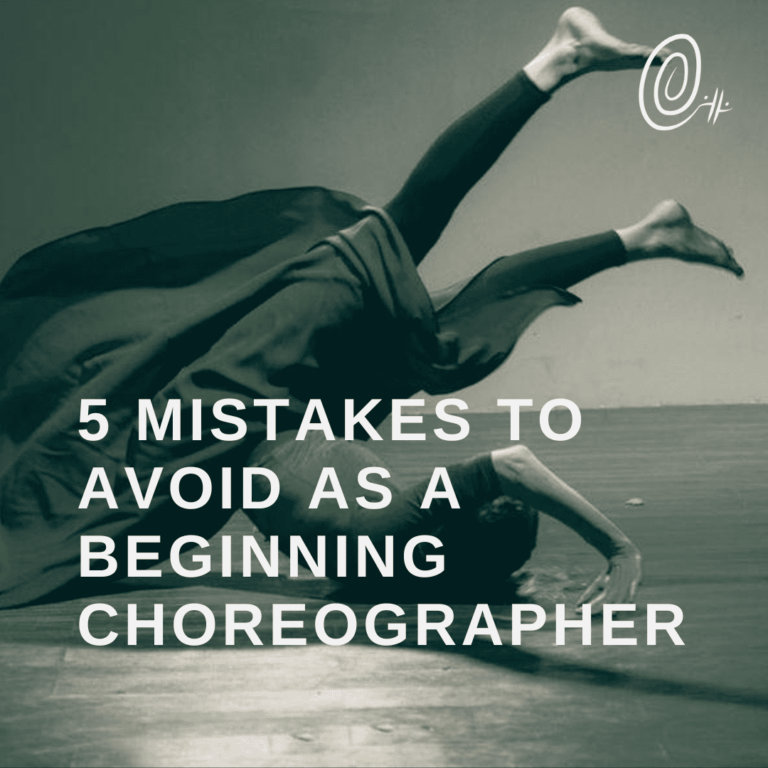How to Make a Training Plan for Dance
They say the hardest part is getting started. While having a training plan for dance doesn’t completely solve the problem, developing a routine and a consistent plan that you can follow does help. That’s what I’m here to help you with (hopefully.)
Of course, what kind of training plan you make and how you make it will depend on what your goal is. For example, if you are just using dance to get fit, you would approach it differently. So for the purposes of this blog, the advice I’m giving is relevant for people who want to improve their technique and strength as a dancer.
I’ll give you some examples of how I create my own training plans, and share some tips for applying to your own schedule. Naturally you don’t want to just copy what I do, as I think training plans work best when they are made to work for you. The worst training plan is one you can’t stick to, so being realistic is really important.
There are two main things we’ll discuss: routines and consistency within flexible schedules, and planning exercises.
Blocking time for a feasible dance training plan
I think most dance training blogs will tell you to start with a goal and then work backwards. (Maybe? I don’t know.) Anyway, I don’t do goals. My goals are to maintain technique and continue to get stronger in particular areas that I notice are weaker or have been forgotten. Neither of these can be exactly measured and they are ongoing. In my opinion, a dance training plan isn’t about conquering one step, but getting the body overall more equipped to deal with whatever you are doing.
One of the reasons that a consistent training plan is necessary is that without attention or constant maintenance, your technique, strength, and flexibility all decline. It’s dismaying how quickly they do, and more so the older you get. So, even a basic training schedule is necessary to just maintain a certain level.
The most important thing to remember is that consistency is more effective than quantity. That means when you are making your plan, try to do more shorter sessions than fewer longer sessions. In the long run, it will just work better.
I usually make my plans on a weekly basis.
I don’t have necessarily have a fixed schedule and I want to be able to stay flexible. Other factors to consider are where you can do your workout – if you go to a gym, or a dance studio, or stay at home. Some people have trouble motivating themselves to work at home, though I’ve gotten in the habit by now. Still, these will affect your schedule and plan. Remember to factor in commute time as well.
During the week, I usually try to have 2 longer sessions of around 2 hours, and 2-3 other shorter sessions of 30-45 minutes depending on my availability. I try not to do anything on Sundays just for the sake of my own sanity.
That’s my schedule, but yours should be tailored for you. Whatever you do, make it something you can stick to. Is it really feasible to expect that you’ll get up early and do it before work? Can you do 15 minutes before dinner? If you go to the gym at night, will you be able to get your rest? These are all things to consider. Remember: consistency over quantity, and make it feasible. A training plan you can’t follow is of no use to anyone.
How to structure your time within training sessions
For a good dance training plan, I suggest you have four elements: stretching, targeted strength exercises, technique exercises, and improvisation (or play/fun time.) The trick is to remember that you don’t have to do all of them in every session.
Usually if I don’t have a lot of time, I just go for stretching and targeted strength exercises. I basically have a repertory of exercises that I’ve picked up from classes, videos, and who knows where, and I choose a few. Generally I try to do exercises that focus on shoulders, back, and hips (not at the same time though.) There are various apps and accounts that show exercises – just start adding to your repertory and pick them out. Remember that there are lots of different areas of the body that will need to be paid attention to, so you might choose exercises that do upper back, side core, and gluts one day, and others that work shoulders, lower back, and hip flexors/quads the next. Keep rotating.
I keep technique exercises for longer sessions, when I can do a full warmup, then technique like a ballet barre, and then exercises. These are dance class exercises – if you don’t know any you can easily find on youtube. I have some on my youtube channel as well. The point of these is to practice dance movements to be able to execute them better. They work your muscles at the same time, though the focus is on the form and execution.
It can’t all be serious business though.
Dance needs to be, well, dance. So I always make sure that every so often I keep one day just for improvisation and/or play. This just means put the music on and groove. You might try out moves, or you can explore different kinds of movements – I do this in my longer sessions, when I’m actually working on improvisation. I’ll try different qualities, shapes, feelings, moves, footwork, etc. But sometimes I actually do just mean play, when there isn’t any thought of how it looks or what you’re doing, it’s just you and the music.
I think this is really important to stay energized and excited about the movement. If it’s just grinding away, it’s easy to lose the flow and the joy.
Kindly kick your own butt
For many people, even if they have a plan it’s hard to stick with it. They feel unmotivated, or don’t want to work out alone. That’s partly why I say it needs to be feasible – a short session is easier to face than a long one you know you can’t manage.
Still, a training plan for dance won’t get you anywhere. It has to be carried out, and for that, I only say that you have to be the one who pushes yourself to do it. Don’t rely on friends or anyone else. Use phone reminders or treats to help you do it if you like; whatever your method is, you just need to get moving. Once you’ve started, it’s easier to continue. (Here are some best practices to keep in mind).
Finally, some days, every now and then, you really can’t manage it. Things get late, you feel crappy, whatever. That’s okay – you can take a day off sometimes. Not every time, and don’t get used to making that excuse for yourself, but you can also be kind. As long as you are consistently training to the best of your ability, you’ll see the effects.
Best of luck!







